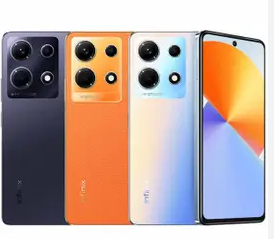Introduction:
The journey of mobile phones has been nothing short of revolutionary, transforming from bulky brick-like devices to sleek, sophisticated smartphones that have become an indispensable part of our daily lives. This evolution reflects not only advancements in technology but also the changing needs and expectations of users.
The Brick Era:
In the early days of mobile phones, the term "mobile" was a misnomer. These devices, often referred to as "brick phones," were large, heavy, and had limited functionalities. The primary purpose was basic voice communication, and the devices were far from being portable. The iconic Motorola DynaTAC, introduced in the 1980s, is a classic example of a mobile phone from this era.
The Rise of Flip Phones:
As technology progressed, so did the design of mobile phones. The introduction of flip phones in the late 1990s marked a significant shift. These phones featured a sleeker design, with a foldable form factor that made them more portable. The Motorola Razr became an iconic symbol of this era, combining style with practicality.
The Era of Candy-Bar Phones:
The candy-bar form factor, characterized by a solid rectangular shape, dominated the mobile phone market in the early 2000s. Nokia's 3310, with its durable build and long battery life, became a global phenomenon. During this period, mobile phones started incorporating basic features like cameras and color screens, signaling the beginning of a new era of innovation.
Smartphones Take Center Stage:
The most transformative phase in the evolution of mobiles came with the advent of smartphones. The introduction of the iPhone in 2007 by Apple and subsequent releases by other manufacturers marked a paradigm shift. Smartphones combined communication, multimedia, and computing capabilities in a single device, revolutionizing the way we interact with technology.
Touchscreens and App Ecosystem:
One of the defining features of modern smartphones is the touchscreen interface. It allowed for more intuitive navigation and paved the way for a myriad of applications. The App Store and Google Play revolutionized how users access software, making it easy to customize and enhance the functionality of their devices.
Connectivity and Mobile Internet:
The evolution of mobiles also brought about significant improvements in connectivity. From 2G to the current 5G networks, mobile phones now offer high-speed internet access, enabling seamless communication, video streaming, and online gaming. This connectivity has made smartphones an essential tool for both personal and professional life.
Camera Innovations:
The camera has become a focal point of modern smartphones. From basic pixelated cameras in early models to the high-resolution, multi-lens systems of today, mobile phones have become indispensable tools for capturing memories. Social media platforms further fueled the demand for better cameras, turning everyone into amateur photographers.
Integration of AI and Biometrics:
The integration of artificial intelligence (AI) and biometric technologies has added an extra layer of security and convenience. Facial recognition and fingerprint sensors are now commonplace, ensuring that our smartphones are not only powerful but also secure.
Conclusion:
The evolution of mobile phones has been a remarkable journey, from the clunky brick phones to the sleek and powerful smartphones of today. As technology continues to advance, we can only anticipate further innovations, perhaps in the realms of augmented reality, foldable displays, and sustainable materials. Mobiles have come a long way, and their evolution is a testament to human ingenuity and our constant desire for smarter, more efficient tools.
